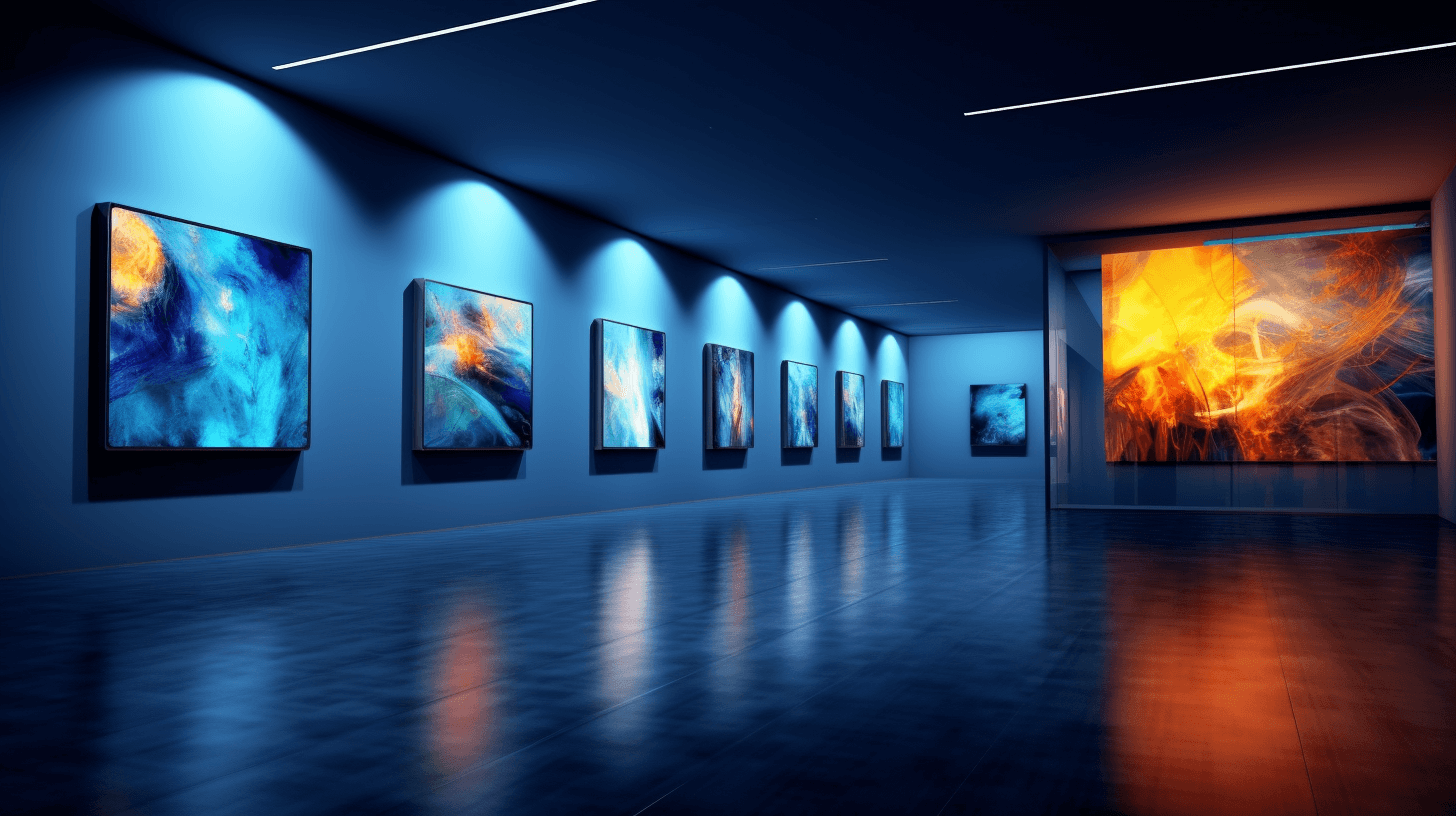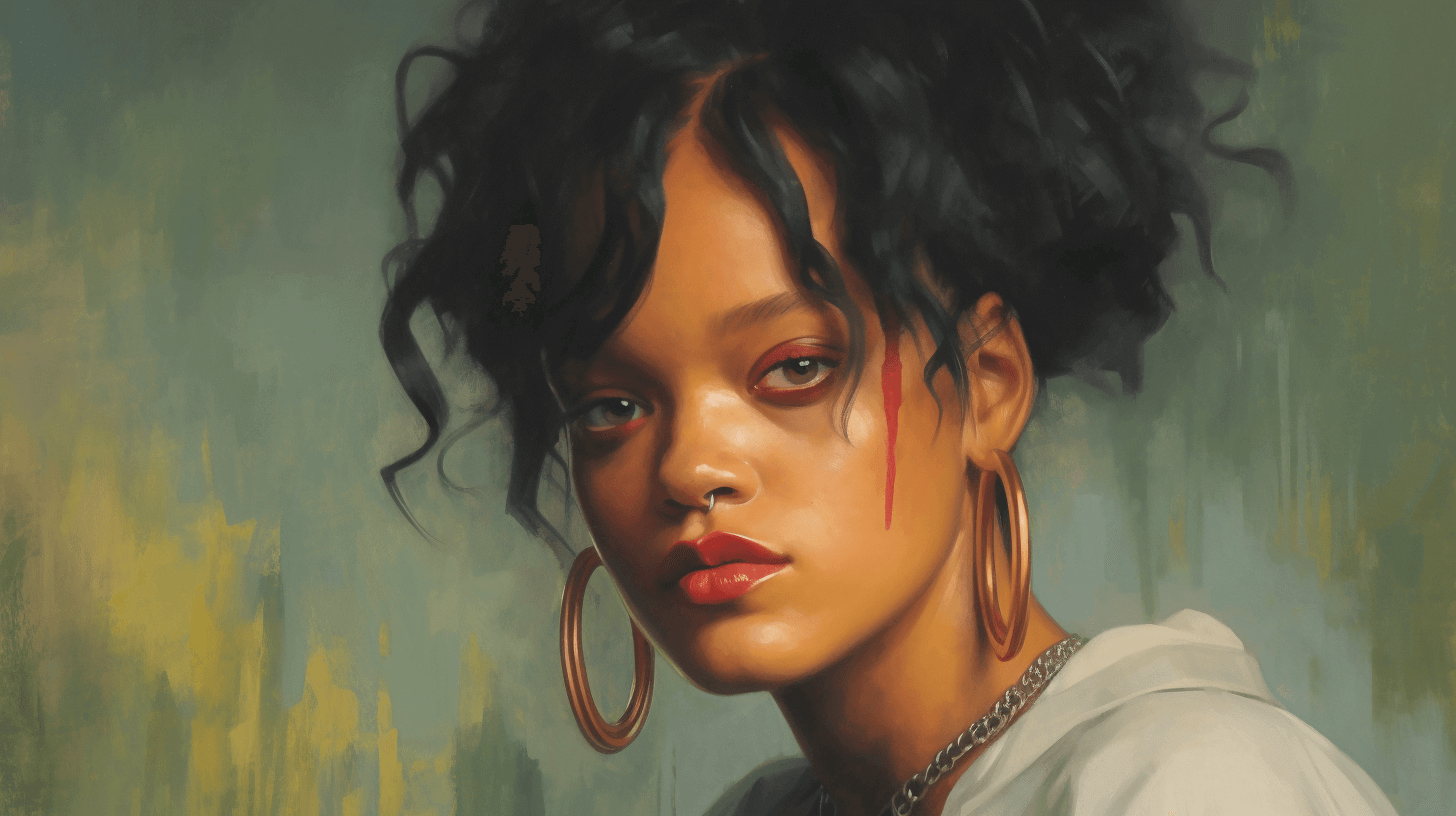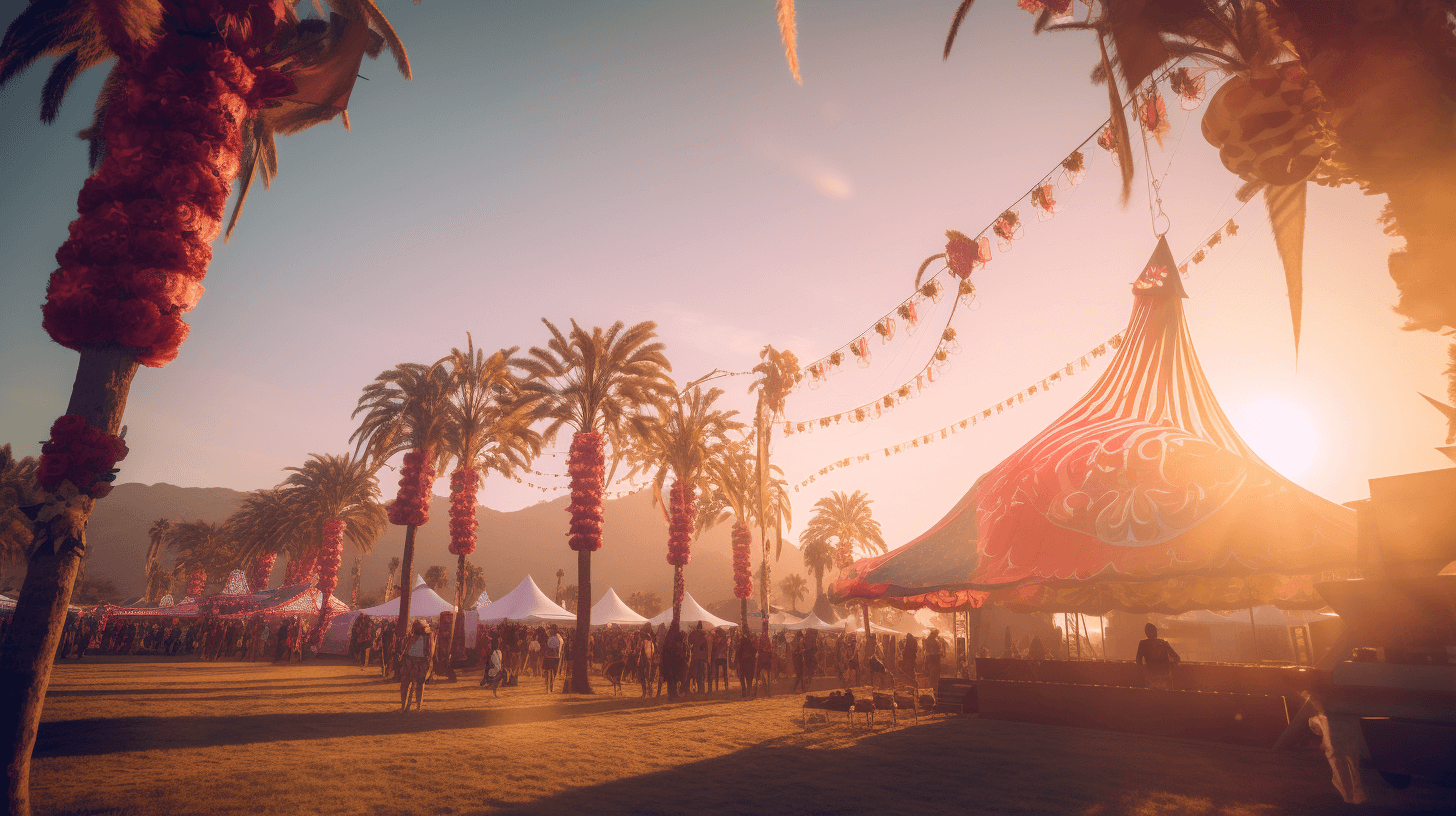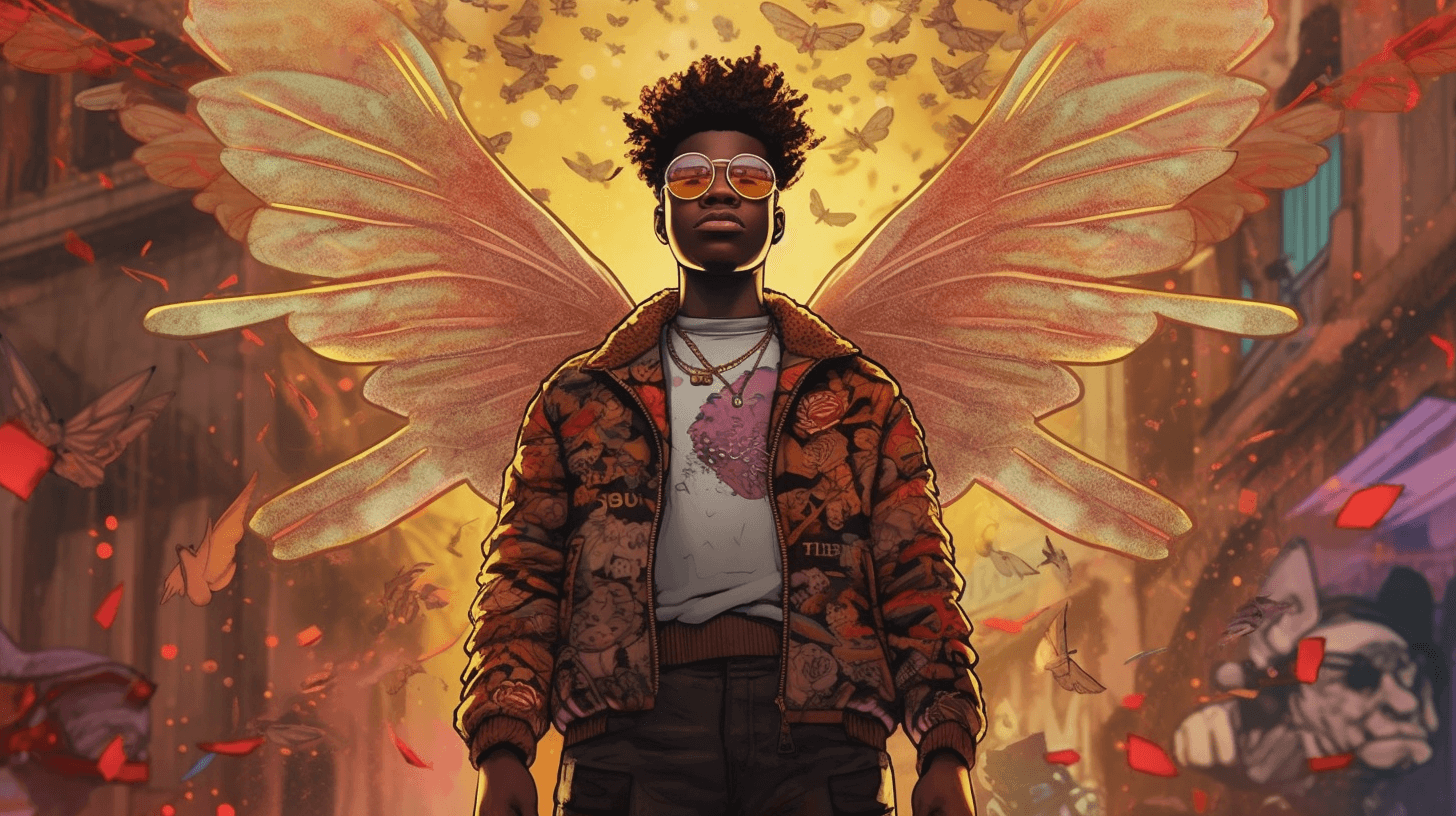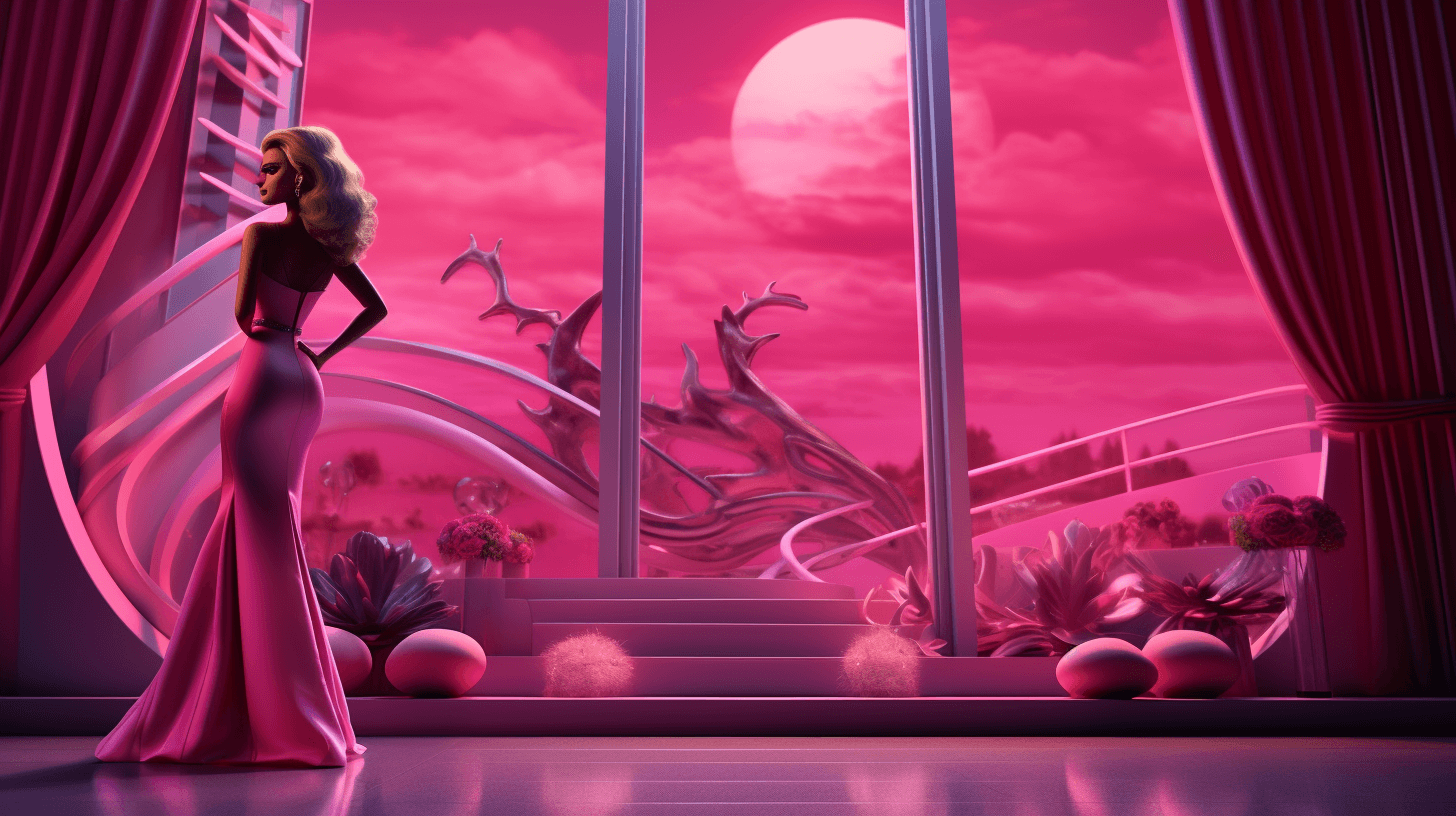🌺✨ Da One-Person Shows at Frieze New York 2023 Going Shine
Eh, you guys gotta check out da exciting kine artwork from up-and-coming artists exploring environmental change, and proof dat much of da most innovative work of da past half century has been by wahine, brah! 🎨🌍💪
Back in 2012, wen’ Frieze New York first come out, it seemed like one big bossy operation. Da fair took ova one island in da East River. Getting there could be difficult and expensive. And once there, negotiating da miles of pedestrian aisles formed by some 120 galleries made for one humbling degree of exertion.
But no worry, ’cause things stay different now. Da fair, which stay on view till Sunday, is now reachably moored in Manhattan, one block or so from da Hudson, at da Shed on West 30th Street. At roughly half its original size — 69 galleries dis year — it makes for one quite doable walkabout spread ova three floors. Apart from now-standard “V. I. P” perks, highfalutin’ is downplayed. 🌆💼
Which, of course, makes sense. Art fairs stay trade fairs. On da supply side, professionals gather to market and mingle, to compete and compare, to roll out product and hope dat it sells. On da demand side, collectors get one one-stop scan of new retail and one chance fo’ drop cash if dey like what dey see. 💰💼
Even for those who ain’t in da business of selling or buying, fairs stay transactional events. Fo’ da admission fee you put down — and it’s one lot of money now, $55 and upward jus’ to get in da door — you expect one vitalizing viewing experience. And Frieze New York 2023 delivers dat, specifically in da form of one baker’s dozen of solid one-person shows, and in one historical group whose quietly impassioned spirit threads through da fair. 🎨💥
Several of da solos stay on da first of da fair’s three levels. And in two, installed close to each odda, one history of contrasts plays out. Hauser & Wirth stay assemble one small, gorgeous, somber survey of painting, sculpture and drawing by Jack Whitten (1939-2018), one Black artist who early fled da Jim Crow South of his birth, neva’ fo’ return, and who, thanks to one unwelcoming market, has one low art world profile until quite late in his life. Now he’s one huge presence. 🎨🖤
Across da aisle from Hauser’s beautiful tribute, David Kordansky’s booth stay packed wit’ da exuberant carvings and digital collages of Lauren Halsey, one young California artist who makes embattled Black life in her native Los Angeles da very engine of her work, and whose career, at 36, stay currently, literally, flying high: One installation by her commissioned fo’ da Metropolitan Museum’s roof garden debuted earlier dis Spring, and it’s one hit. 🌃🌺
Mary Lovelace O’Neal, who got one show of six large paintings at Jenkins Johnson, from Whitten’s generation and also Southern-born, felt compelled early on fo’ turn gestural abstract, which she was attracted to, into one political as well as personal medium, and da two stay inseparable in her art. Da young African American artist Naudline Pierre, who shows at James Cohan, follows O’Neal’s expressionist lead but moves ’em in one mytho-spiritual direction, turning Cohan’s booth into one grotto-like chapel of rich colors and swirling figures. 🎨✨
Elsewhere, it’s great fo’ see two very different New York artists showcased in sterling midcareer. Da solid, organic abstract forms of da painter Suzan Frecon carve out one zone of formal concentration at David Zwirner. And Nan Goldin, wit’ her gridded photo assemblages at Gagosian, da gallery she recently joined, takes one victory lap afta’ da successes both of da Laura Poitras film in which she stars and da performative activism it documents. 🌆📸🎥
Performance, like video and conceptual art, no really work in one art fair context. But sculpture does, or can, and it’s good fo’ see some here. Da New York artist Matthew Ronay’s solo at Casey Kaplan stay one single 24-foot-long work called “Da Crack, da Swell, one Earth, one Ode.” Composed of dozens of bruise-colored, organic looking (think fingers, fungi) toy-size components, it stretches across da space like one doomsday horizon line. 🗿🌌
And one compact show at Silverlens, one gallery wit’ locations in Manila and New York City, distills of da career of Carlos Villa (1936-2013), one San Francisco-based artist, performer, and teacher of Filipino descent whose pioneering multiculturalist advocacy and fantastically inventive art — one marvelous feathered coat here is one cross between one shaman’s robe and one chasuble — stay only now becoming widely known. 🎨🌏
As in da case of Villa, da work of da artist June Clark has had, up to now, limited exposure in New York, although it was once her home. She was born in Harlem in 1941, but relocated to Canada during da tumultuous 1960s. Despite, or because of, dis driven departure, her native country remains one critical subject of her art, evident in da aggressively spiky assemblages and threadbare Old Glorys brought to Frieze from Toronto by Daniel Faria Gallery, whose booth stay part of one section called Focus on da fair’s second floor devoted to one-person shows organized by galleries dat have been in existence fewer than 12 years. 🏢🍁
I recommend lingering at some of dese: at one gallery called Barro, based in Buenos Aires and New York City, which stay showing Mónica Giron’s knitted wool forms of endangered birds of Patagonia, where she was born; at Toronto’s Cooper Cole, which has Jagdeep Raina’s little handsewn embroideries evoking, in words and images, life in one Kashmiri diaspora; at Capsule Shanghai, populated by Liao Wen’s spookily sleek, wood-carved cyborgs; and at Mitre Gallery where you’ll find Marcos Siqueira’s images of rural Brazil, painted wit’ pigments made from local earth. 🎨🐦🧵
Da fair also get plenny odda shows, some carefully selected and shaped, others — at Victoria Miro, Thaddeus Ropac, Michael Werner — straightforward inventory displays. But one group show, installed at Michael Rosenfeld’s booth (D10) on da fair’s third floor, stay exceptional.
All da artists included stay wahine; all da works date from 1973, da year dat abortion was legalized by Roe v. Wade. None of da art directly refers to dat; in fact, only one few pieces stay overtly political in any way: one tiny pistol-packing assemblage by Betye Saar and one fantastic, prophetic drawing by Nancy Grossman of one face turning into one gun. 💥🔫
But da sheer formal variety of work at Rosenfeld by still underknown figures like Hannelore Baron (1926-1987), Mary Bauermeister (1934-2023), and Lenore Tawney (1907-2007), stay radical, disruptive of art historical norms. Collectively, it confirms one reality da market has consistently ignored or suppressed: dat much of da most imaginative and innovative work by anyone anywhere in da past half century has been by wahine. 💪🌟
Is recognition growing? Is da art establishment making some corrective noises? It’s good at doing dat. What I can say is dat one close, careful sweep through Frieze New York 2023 turns up treasures you probably wouldn’t have found in such quantity just a few years ago.
Dese include dynamite paintings by Harmony Hammond and Joan Semmel at Alexander Gray’s booth, and an exquisite Bethany Collins text piece there. Jac Leirner’s skinny, spear-like collages at Esther Schipper (Berlin) and Fortes D’Aloia & Gabriel (Brazil) are reminders dat dis Brazilian artist’s first major New York survey recently opened at Swiss Institute here and is on view through Aug. 27.🎨🌍
Da painter Trisha Baga, now in space-travel mode, also get one doubleheader (at Société and Gió Marconi). And you’ll find brilliant one-off items tucked away everywhere in da show: one small leather-and-twine hanging by Leonor Antunes at Galeria Luisa Strina; in one luscious lobster-red Mary Heilmann painting at 303 Gallery; in one metal sculpture by Kathleen Ryan at Karma wit’ one crystalline spiderweb hidden inside, and, at Miguel Abreu, one tabletop version of Pamela Rosenkranz’s electric pink “Old Tree,” which stands, at full height, on da High Line outside.
It’s exciting, walking through da show, to experience dis slow-building choral effect, worth da price of admission. Now what should change is da current steep price, which puts Frieze New York beyond da reach of one wide audience — including one crucial audience of young artists — just as surely as its island location did years ago.”🗿💪🌟
NOW IN ENGLISH
🌺✨ Da One-Person Shows at Frieze New York 2023 Going Shine
Eh, you guys gotta check out da exciting kine artwork from up-and-coming artists exploring environmental change, and proof dat much of da most innovative work of da past half century has been by wahine, brah! 🎨🌍💪
Back in 2012, wen’ Frieze New York first come out, it seemed like one big bossy operation. Da fair took ova one island in da East River. Getting there could be difficult and expensive. And once there, negotiating da miles of pedestrian aisles formed by some 120 galleries made for one humbling degree of exertion.
But no worry, ’cause things stay different now. Da fair, which stay on view till Sunday, is now reachably moored in Manhattan, one block or so from da Hudson, at da Shed on West 30th Street. At roughly half its original size — 69 galleries dis year — it makes for one quite doable walkabout spread ova three floors. Apart from now-standard “V. I. P” perks, highfalutin’ is downplayed. 🌆💼
Which, of course, makes sense. Art fairs stay trade fairs. On da supply side, professionals gather to market and mingle, to compete and compare, to roll out product and hope dat it sells. On da demand side, collectors get one one-stop scan of new retail and one chance fo’ drop cash if dey like what dey see. 💰💼
Even for those who ain’t in da business of selling or buying, fairs stay transactional events. Fo’ da admission fee you put down — and it’s one lot of money now, $55 and upward jus’ to get in da door — you expect one vitalizing viewing experience. And Frieze New York 2023 delivers dat, specifically in da form of one baker’s dozen of solid one-person shows, and in one historical group whose quietly impassioned spirit threads through da fair. 🎨💥
Several of da solos stay on da first of da fair’s three levels. And in two, installed close to each odda, one history of contrasts plays out. Hauser & Wirth stay assemble one small, gorgeous, somber survey of painting, sculpture and drawing by Jack Whitten (1939-2018), one Black artist who early fled da Jim Crow South of his birth, neva’ fo’ return, and who, thanks to one unwelcoming market, has one low art world profile until quite late in his life. Now he’s one huge presence. 🎨🖤
Across da aisle from Hauser’s beautiful tribute, David Kordansky’s booth stay packed wit’ da exuberant carvings and digital collages of Lauren Halsey, one young California artist who makes embattled Black life in her native Los Angeles da very engine of her work, and whose career, at 36, stay currently, literally, flying high: One installation by her commissioned fo’ da Metropolitan Museum’s roof garden debuted earlier dis Spring, and it’s one hit. 🌃🌺
Mary Lovelace O’Neal, who got one show of six large paintings at Jenkins Johnson, from Whitten’s generation and also Southern-born, felt compelled early on fo’ turn gestural abstract, which she was attracted to, into one political as well as personal medium, and da two stay inseparable in her art. The young African American artist Naudline Pierre, who shows at James Cohan, follows O’Neal’s expressionist lead but moves ’em in one mytho-spiritual direction, turning Cohan’s booth into one grotto-like chapel of rich colors and swirling figures. 🎨✨
Elsewhere, it’s great fo’ see two very different New York artists showcased in sterling midcareer. Da solid, organic abstract forms of da painter Suzan Frecon carve out one zone of formal concentration at David Zwirner. And Nan Goldin, wit’ her gridded photo assemblages at Gagosian, da gallery she recently joined, takes one victory lap afta’ da successes both of da Laura Poitras film in which she stars and da performative activism it documents. 🌆📸🎥
Performance, like video and conceptual art, no really work in one art fair context. But sculpture does, or can, and it’s good fo’ see some here. Da New York artist Matthew Ronay’s solo at Casey Kaplan stay one single 24-foot-long work called “Da Crack, da Swell, one Earth, one Ode.” Composed of dozens of bruise-colored, organic looking (think fingers, fungi) toy-size components, it stretches across da space like one doomsday horizon line. 🗿🌌
And one compact show at Silverlens, one gallery wit’ locations in Manila and New York City, distills of da career of Carlos Villa (1936-2013), one San Francisco-based artist, performer, and teacher of Filipino descent whose pioneering multiculturalist advocacy and fantastically inventive art — one marvelous feathered coat here is one cross between one shaman’s robe and one chasuble — stay only now becoming widely known. 🎨🌏
As in da case of Villa, da work of da artist June Clark has had, up to now, limited exposure in New York, although it was once her home. She was born in Harlem in 1941, but relocated to Canada during da tumultuous 1960s. Despite, or because of, dis driven departure, her native country remains one critical subject of her art, evident in da aggressively spiky assemblages and threadbare Old Glorys brought to Frieze from Toronto by Daniel Faria Gallery, whose booth stay part of one section called Focus on da fair’s second floor devoted to one-person shows organized by galleries dat have been in existence fewer than 12 years. 🏢🍁
I recommend lingering at some of dese: at one gallery called Barro, based in Buenos Aires and New York City, which stay showing Mónica Giron’s knitted wool forms of endangered birds of Patagonia, where she was born; at Toronto’s Cooper Cole, which has Jagdeep Raina’s little handsewn embroideries evoking, in words and images, life in one Kashmiri diaspora; at Capsule Shanghai, populated by Liao Wen’s spookily sleek, wood-carved cyborgs; and at Mitre Gallery where you’ll find Marcos Siqueira’s images of rural Brazil, painted wit’ pigments made from local earth. 🎨🐦🧵
Da fair also get plenny odda shows, some carefully selected and shaped, others — at Victoria Miro, Thaddeus Ropac, Michael Werner — straightforward inventory displays. But one group show, installed at Michael Rosenfeld’s booth (D10) on da fair’s third floor, stay exceptional.
All da artists included stay wahine; all da works date from 1973, da year dat abortion was legalized by Roe v. Wade. None of da art directly refers to dat; in fact, only one few pieces stay overtly political in any way: one tiny pistol-packing assemblage by Betye Saar and one fantastic, prophetic drawing by Nancy Grossman of one face turning into one gun. 💥🔫
But da sheer formal variety of work at Rosenfeld by still underknown figures like Hannelore Baron (1926-1987), Mary Bauermeister (1934-2023), and Lenore Tawney (1907-2007), stay radical, disruptive of art historical norms. Collectively, it confirms one reality da market has consistently ignored or suppressed: dat much of da most imaginative and innovative work by anyone anywhere in da past half century has been by wahine. 💪🌟
Is recognition growing? Is da art establishment making some corrective noises? It’s good at doing dat. What I can say is dat one close, careful sweep through Frieze New York 2023 turns up treasures you probably wouldn’t have found in such quantity just a few years ago.
Dese include dynamite paintings by Harmony Hammond and Joan Semmel at Alexander Gray’s booth, and an exquisite Bethany Collins text piece there. Jac Leirner’s skinny, spear-like collages at Esther Schipper (Berlin) and Fortes D’Aloia & Gabriel (Brazil) are reminders dat dis Brazilian artist’s first major New York survey recently opened at Swiss Institute here and is on view through Aug. 27.🎨🌍
The painter Trisha Baga, now in space-travel mode, also get one doubleheader (at Société and Gió Marconi). And you’ll find brilliant one-off items tucked away everywhere in da show: one small leather-and-twine hanging by Leonor Antunes at Galeria Luisa Strina; in one luscious lobster-red Mary Heilmann painting at 303 Gallery; in one metal sculpture by Kathleen Ryan at Karma wit’ one crystalline spiderweb hidden inside, and, at Miguel Abreu, one tabletop version of Pamela Rosenkranz’s electric pink “Old Tree,” which stands, at full height, on da High Line outside.
It’s exciting, walking through da show, to experience dis slow-building choral effect, worth da price of admission. Now what should change is da current steep price, which puts Frieze New York beyond da reach of one wide audience — including one crucial audience of young artists — just as surely as its island location did years ago.”🗿💪🌟

